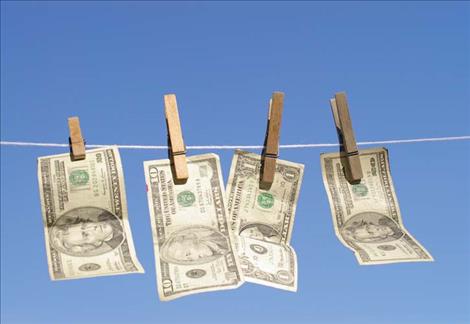Relief money impacts local governments
Hey savvy news reader! Thanks for choosing local.
You are now reading
1 of 3 free articles.
Windfall is defined as a sudden and unexpected bounty, as when the wind knocks ripe apples or plums from a tree so you don’t have to reach for them or when the federal government promises to send an estimated $2.7 billion in COVID-19 relief money to Montana’s state, local and tribal governments as part of the $1.9 trillion American Rescue Plan signed into law March 11.
Local governments across Montana will benefit from the largess. Among them, Lake County will receive nearly $6 million, and over $1.2 million goes to Polson, $512,000 to Ronan, and more than $200,000 to St. Ignatius.
Other disbursements include around $382 million for K-12 education, $286 million for extended pandemic unemployment benefits, $152 million for emergency rental assistance, and $143 million for COVID-19 testing and contract tracing. State government will receive around $910 million, which the Legislature is currently deciding how to spend.
State Sen. Greg Hertz, of Polson, whose committee assignments include vice chair of Taxation, and membership on Education, Rules and Fish and Game committees, said the state is waiting for detailed rules before allocating the one-time funds.
“The Legislature is looking at infrastructure projects, which would include broadband, water/sewer projects, roads and school maintenance projects, just to name a few,” he said via email. “We are also looking at various programs to help businesses and their employees get up and running again to pre-COVID levels.”
Hertz added that he personally would like to see money allocated to school districts to fund voluntary summer school for students “who may need additional help before next fall.”
Local governments learned about the surprise infusion last week. Lake County Commissioner Gale Decker anticipates receiving the first $3 million in May, and the second half a year later. The deadline for spending those funds is Dec. 31, 2024.
“As yet, the county doesn’t know precisely what the dollars can be spent on, so we won’t spend any of the money until getting more direction from the Secretary of Treasury and State of Montana,” he wrote via email.
According to Decker, property tax revenues don’t appear to have suffered from the pandemic. Instead, increases in the number of septic permits issued and new address requests point to more construction that may result in higher property tax revenues.
All county offices have remained fully staffed during the pandemic. Lake County Public Health was hardest hit with the additional duties of contract tracing and vaccine clinics. “But they persevered and served the public well,” said Decker.
“Our motor vehicle department has been inundated with folks requesting title work as it looks like a significant part of stimulus checks were spent on vehicles and toys that need titles,” he added.
Over at Polson City Hall, manager Ed Meece unearthed news about the influx in a press release from the Montana League of Cities and Towns. “I looked at the line on the distribution chart and went, whoa! It was a big surprise,” he says.
Like other recipients, he says the city needs more information before deciding how to spend an extra $1.2 million.
Of course, there are strings attached to the massive influx. Among the eligible uses of the funds:
• Investments in water, sewer or broadband infrastructure;
• Providing premium pay up to an additional $13 an hour in wages for workers performing an essential function in the pandemic, or offering grants to eligible local employers for essential workers;
• Assistance to households, small businesses, nonprofits, or industries such as tourism, travel and hospitality that were adversely impacted by the pandemic;
• Backfilling reduced or lost revenues to continue providing government services.
Funds may not be used for pensions or tax cuts.
















